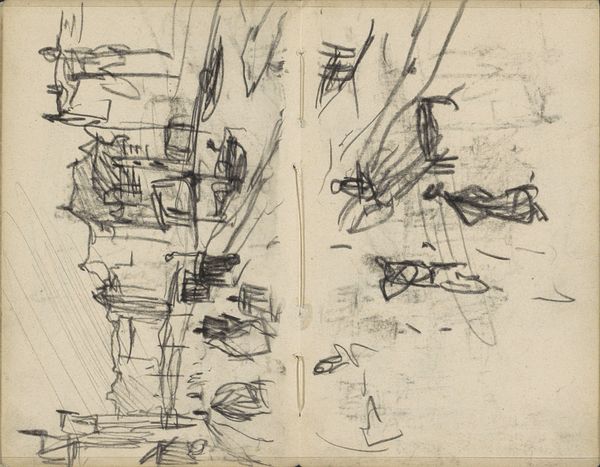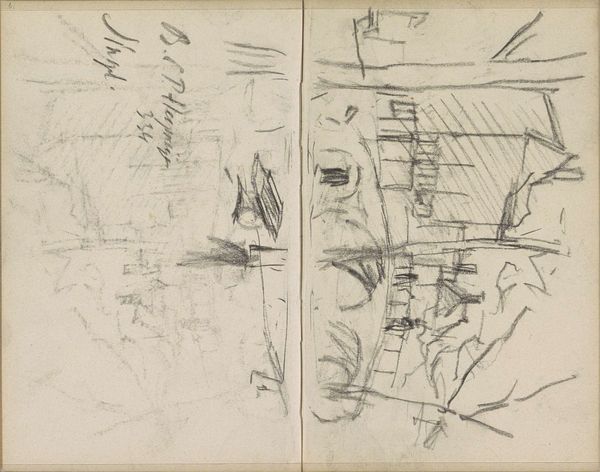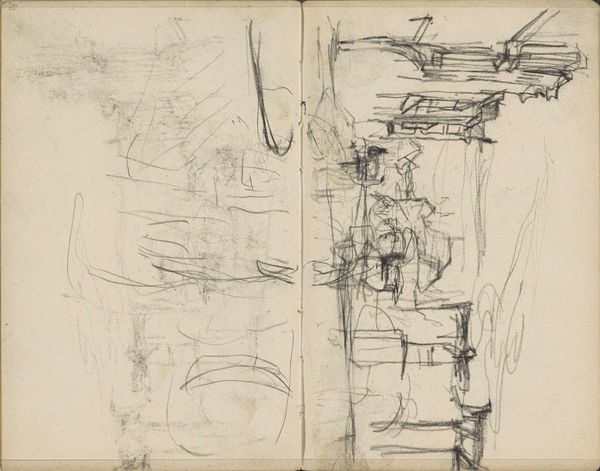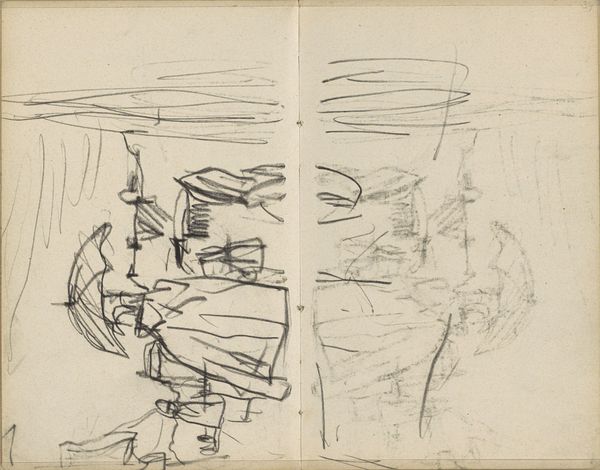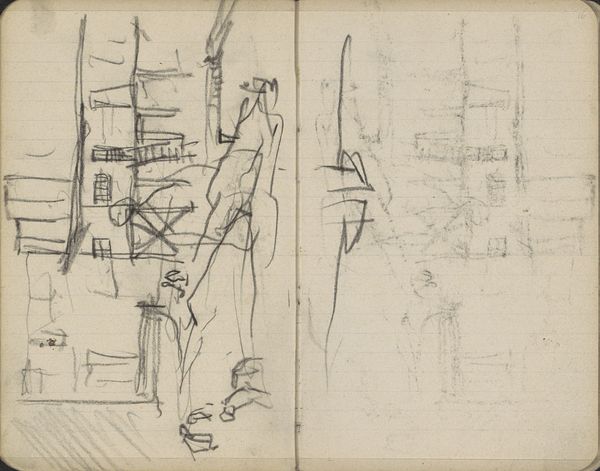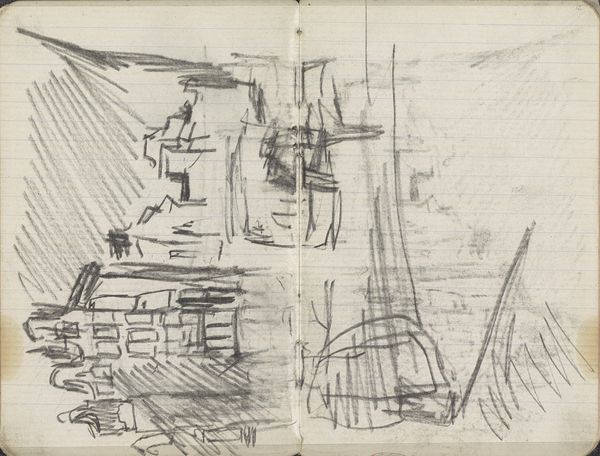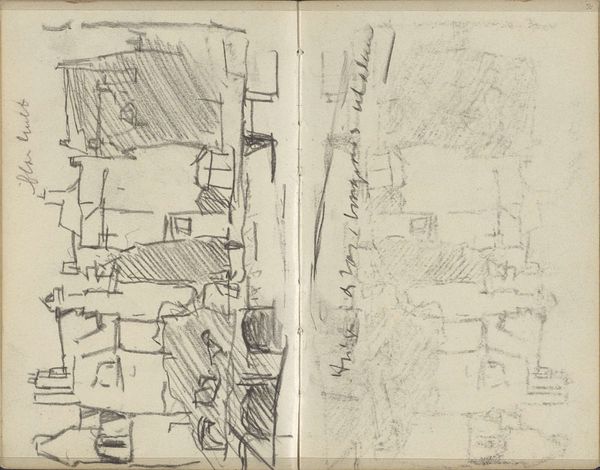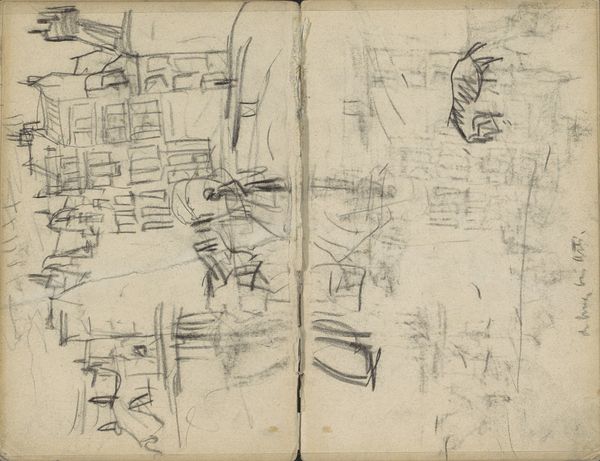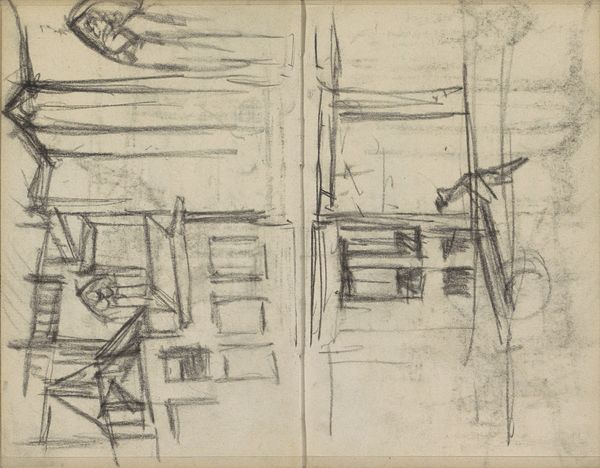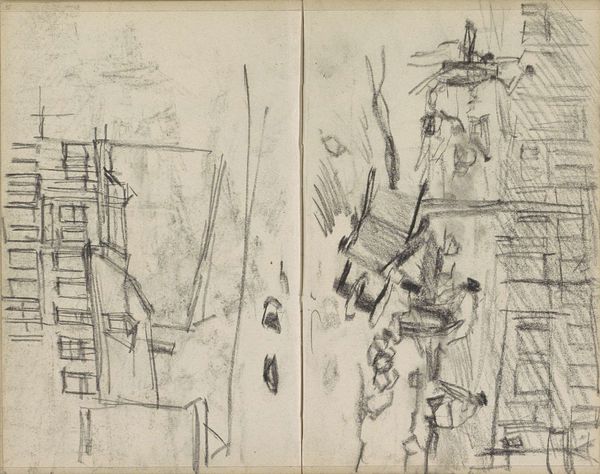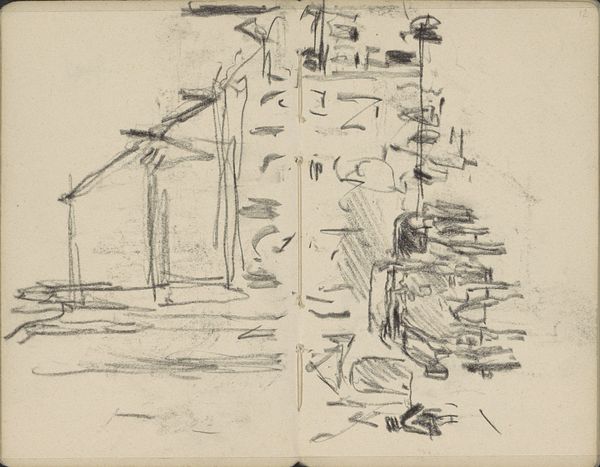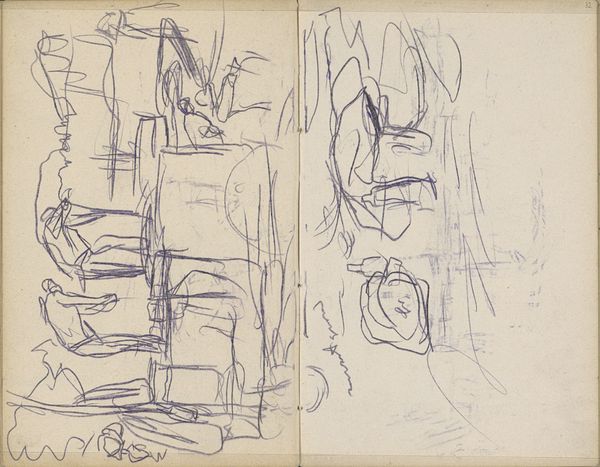
Copyright: Rijks Museum: Open Domain
Editor: Here we have George Hendrik Breitner’s “Gezicht op de Zijlstraat te Haarlem,” created around 1902 using pencil and pen on paper. It looks like a page ripped right out of a sketchbook! The chaotic, almost frantic lines give it an unfinished feel, as if it was captured in haste. What story do you think the materials and process tell us? Curator: It's easy to dismiss a sketch like this as preliminary, but for me, its value lies precisely in its process. Consider the materiality of the paper, its likely cheap production for everyday use. Then the hurried marks: Breitner is actively *making* an image. We see the artist grappling with representing a rapidly modernizing urban landscape in Haarlem. Editor: So, you're suggesting the choice of humble materials elevates the everyday? Curator: Precisely! This sketch challenges the traditional boundaries between high art and craft. The pen and pencil become tools to investigate not just *what* is seen, but *how* the industrial revolution reshaped lived experience, literally building a new world. The mass-produced paper and easily accessible drawing tools democratized art making. Editor: That makes me think about how photography was also becoming popular then and influencing art. Was he trying to capture something a photograph couldn’t? Curator: Good question. He wasn't necessarily trying to replicate the precision of photography but instead offering a subjective, embodied experience. This sketch acts almost as a form of visual shorthand; it explores labor through both the marks and the industrial, commercial district pictured. How the urban environment *felt*, its raw energy. He's showing us labor and industry. Editor: I see! I hadn't considered how much the simple act of sketching and the materials used could speak to such broader social and economic themes. Curator: Indeed. Looking closely at the materials allows us to move past aesthetics, and it permits an examination of the dynamic relationship between artist, object, and societal changes. Editor: This really opens up how I think about art that isn't necessarily a 'finished' painting.
Comments
No comments
Be the first to comment and join the conversation on the ultimate creative platform.
